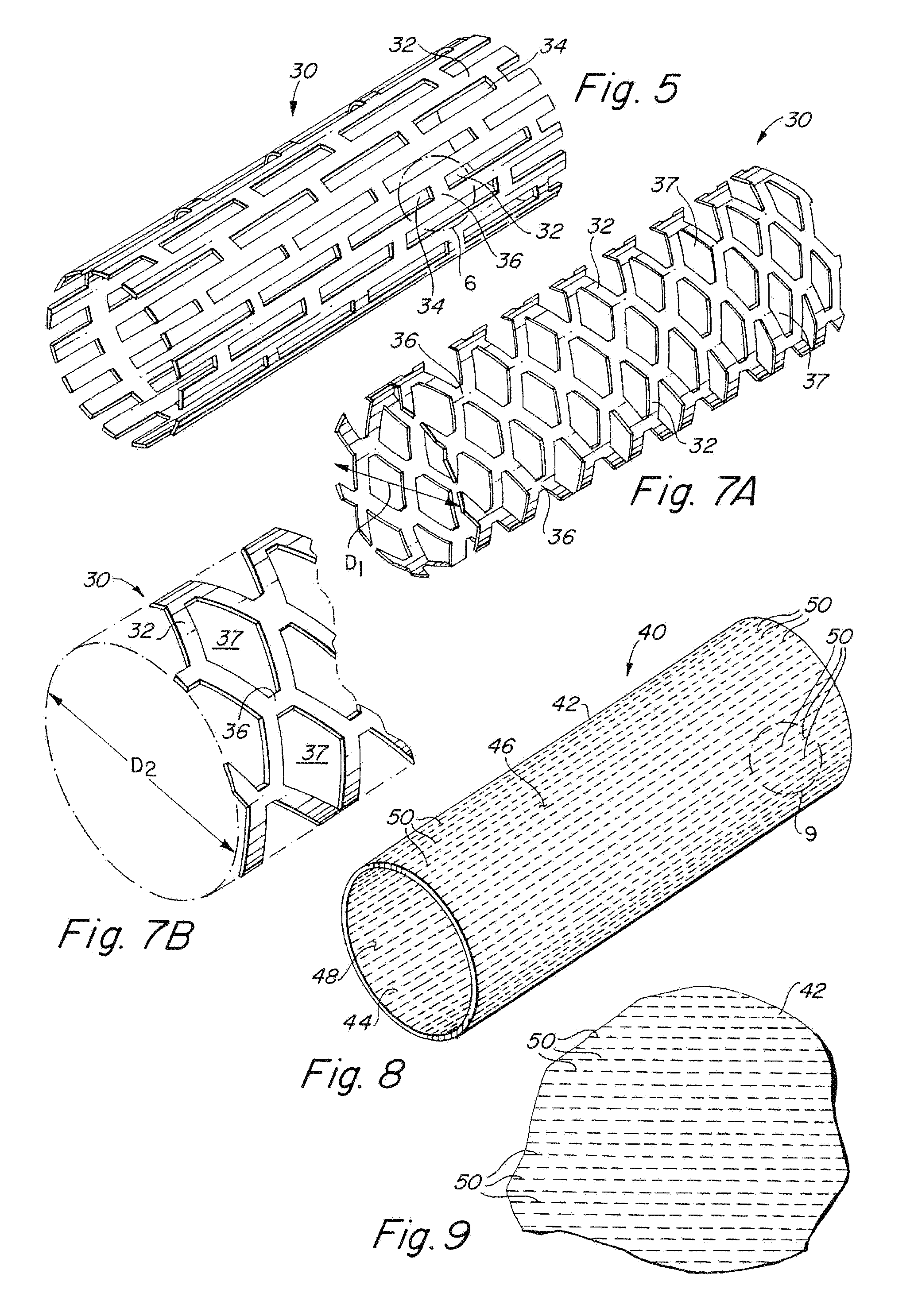In vivo sensor and method of making same
a technology of in vivo sensor and in vivo, which is applied in the field of implantable medical devices, can solve the problems of generally not being able to accept the method of joining nickel-titanium alloys to other materials, and achieve the effect of increasing or decreasing the diameter of the implan
- Summary
- Abstract
- Description
- Claims
- Application Information
AI Technical Summary
Benefits of technology
Problems solved by technology
Method used
Image
Examples
Embodiment Construction
[0040]To simplify description of the present invention, most of the preferred embodiments will be described with reference to an endoluminal stent, except where otherwise stated. However, those of ordinary skill in the art will understand that each embodiment has application to a variety of implantable devices including, without limitation, stents, grafts, stent-grafts, valves, shunts or patches.
[0041]The particular means for detecting a change in the inventive sensor and / or the particular means for activating a change in the inventive sensor is generally not considered part of the present invention. For example, it is known that ultrasound energy may be employed to generate both one-way and two-way shape memory effects in nickel-titanium alloys. V. V. Kiubovich, V. V. Rubanick, V. G. Dorodeiko, V. A. Likhachov, and V. V. Rubanick Jr. (Institute of Tech. Acoustics, 13 Ludnikova, 210026 Vitebsk, Belarus,) Generation of Shape Memory Effect in Ti—Ni Alloy by means for Ultrasound, Abstr...
PUM
| Property | Measurement | Unit |
|---|---|---|
| thick | aaaaa | aaaaa |
| frequency | aaaaa | aaaaa |
| temperature | aaaaa | aaaaa |
Abstract
Description
Claims
Application Information
 Login to View More
Login to View More - R&D
- Intellectual Property
- Life Sciences
- Materials
- Tech Scout
- Unparalleled Data Quality
- Higher Quality Content
- 60% Fewer Hallucinations
Browse by: Latest US Patents, China's latest patents, Technical Efficacy Thesaurus, Application Domain, Technology Topic, Popular Technical Reports.
© 2025 PatSnap. All rights reserved.Legal|Privacy policy|Modern Slavery Act Transparency Statement|Sitemap|About US| Contact US: help@patsnap.com



